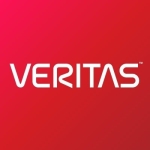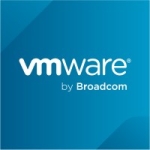What is our primary use case?
I've done almost everything with Commvault, e.g., back and forth centralization for file systems and applications like SQL, Oracle, VMware, and Hyper-V. Commvault does a lot of integration.
Most of our installations are on-premise, but I remember doing one installation on the cloud.
We always work with the latest version of the solution.
How has it helped my organization?
We are not utilizing Commvault as it should be. Most installations are for backup and protecting data. We have it on cloud or on-premise. Most of the customers need only this. So, I haven't given real value other than backup and restore. However, we are working on this with our customers, trying to give them the culture of how to use this data and product with value. For example, using Commvault to migrate your applications.
What is most valuable?
You can back up everything from this one backup solution. You can do backups, archives, and replications. You can backup 89 percent of the application.
It can support the backup to and from the cloud. The cloud integration with Commvault is excellent. It can support a lot of cloud vendors, like Amazon, Azure, and Google Cloud Platform.
The endpoint protection for PCs, laptops, and mobile devices is a feature that they have done a lot of hard work with. It can do backups anytime, e.g., when you have a device connected from on-premise, when are you connected through the WAN, and if you didn't do the right setup. This is a good feature.
If you have cloud applications and payment applications, you can migrate from the payment app to the cloud and also migrate from one cloud to another cloud. There is a lot of flexibility on what you can do in Commvault.
In Commvault, they used to use only the CommCell Console for backup and configuration. They have been working on a new console for quite some time now. The last time I installed the solution (maybe last week), I used the Web Console, which is excellent. Commvault can be a bit complex, but on the Web Console, they have done very beautiful work. You can do a lot of things easily and simply with the Web Console. It has 90 percent solved the complexity of Commvault. You sometimes need to log into the complex interface, but almost everything can be done from the web interface.
The Command Center is provided from the web interface. You can back up the data for everybody, but also you can give everybody the ability to view and restore their data. For example, if a laptop, machine, or environment is owned by X, then X can look in and see the environment and data that he has backed up. He can see everything that he owns and can manage the environment as he wishes. It gives him an excellent view of his environment and infrastructure. Also, if you are a service provider, you can back up data for multiple companies and give everyone an interface for their environment to manage, backup, and restore data. Commvault has done excellent work in this area.
What needs improvement?
I would like them to keep working on the new web interface to migrate out of the old interface because the old interface is a bit complex. It was driving customers away because of the complexity. If they migrate everything (100 percent of the features), this would make the product be perfect.
Buyer's Guide
Commvault Cloud
October 2025
Learn what your peers think about Commvault Cloud. Get advice and tips from experienced pros sharing their opinions. Updated: October 2025.
868,787 professionals have used our research since 2012.
For how long have I used the solution?
We have been using the solution for two years.
What do I think about the stability of the solution?
The stability is excellent. Once you install and configure everything the right way, there is only the infrastructure. If there is a problem with the infrastructure, it will reflect on your backup. If there are no problems with the infrastructure, then there will be no problems. I have been working with Commvault for two years and don't remember opening more than 10 cases for a lot of customers.
What do I think about the scalability of the solution?
It is easily scalable. You may need to add a gateway, proxy, or media server to the environment before adding more data to the environment.
Something that is not commonly used is that you can use Appian as a backup storage solution in one integrated package.
How are customer service and support?
I rarely use the technical support because of the stability. The technical support is very good. Once you have a case, depending on the severity, there is an engineer who will connect with you. That's the most important thing when you have a problem. They will connect with you and solve your problem on spot. Commvault has a built-in feature that if it's connected to the Internet with one click you can upload all the logs. Then, the Commvault engineer can see all the logs he needs. Most of the time, it takes one hour for a problem to be solved as they have excellent support.
It's an excellent solution for cloud support. One of the important features that I am selling and trying to convince customers to use is the backup for Office 365, SharePoint, and OneDrive from Microsoft. Microsoft can be in your environment with high availability and everything will be good, but if you delete it by mistake, then for a short period Microsoft can't restore anything. Also, the way Chromebooks integrates with the cloud services is excellent.
Which solution did I use previously and why did I switch?
I started my experience with HPE Data Protector, which I now hate, because it's now Micro Focus and it's killing me.
I have worked with Dell EMC. Their solution does the work, but there are a lot of the problems with the ESXi.
I have worked with NetBackup. NetBackup is good, but I haven't seen the new feature like they have in Commvault for integration.
I have also worked with Veritas Backup Exec.
How was the initial setup?
With Commvault, if you need basic integration and configuration but no advanced features, then you can do the setup in maximum three to four hours. However, if you need to do everything, you will need everything to be organized for you to work.
What about the implementation team?
For the backup specifically, you have to implement the basic design with every client. It then depends on their needs, environment, and how we can make their life easier. Every time, we have to change something in order to give our customers the best experience.
What was our ROI?
The solution enables our customers to save on infrastructure costs by being able to manage what were disparate data management solutions in one place. It is one of the most important features: You can do backup for almost everything from one platform. Plus, you can reduce costs by using any cheap storage and still have the deduplication feature. You can present any cheap storage for the backup and not have to worry about the B2B high cost appliances, like HPE, Dell EMC Data Domain, etc. When you can do everything from one place, it's always better. It will reduce cost on the infrastructure and human resources who manage the environment.
What's my experience with pricing, setup cost, and licensing?
It was not very popular because of its previous cost, but they have been working on the pricing, and now anyone can afford to use Commvault. They changed the modeling criteria for their pricing. Previously, there was only the capacity modeling based on your content capacity. In this case, they would give you a license and you would have to pay it. Now, most of the environment is virtualized so you can have the best CPU, VMs, etc. You buy whatever you need and pay for what you need.
Which other solutions did I evaluate?
The most important feature that other backup solutions in the enterprise field are missing is a built-in feature for deduplication. It has a buildt-in deduplication engine and database. Therefore, you don't need another B2B vendor, like Appian, in order to do the deduplication. This is the most important feature that other solutions don't have. Most of them need another solution, like Appian or B2B storage. Also, the integration with storage and the snapshots (taken from the storage) have a lot of variety.
I'm a fan of Commvault. I have worked with a lot of backup solutions for about eight years. Commvault is the best until now that I have worked with.
Commvault is the best for cloud integration. I tried VMware where you can back up to the cloud, but it's not easy. With CommVault, you can see the cloud environment, cloud machines and virtual machines (such as on-premises virtual machines). With other solutions, there are a few limitations.
I am still working with Veeam.
There is also another solution, Cohesity. It is a good solution but it still has a lot to do.
What other advice do I have?
Buy Commvault. It is an excellent backup solution. I would recommend the solution.
What is important to Commvault is the flexibility. E.g., if you have a new application that you want to integrate, but it's not supported, they can help you with that. They will start immediately working on it with the development. We have talked with Commvault many times, and this was one of the things that they are proud of. They can give you an integration, even if it's not integrated yet. In addition, Commvault has done a partnership with HPE, which helps with integrations.
I would rate the solution as a 10 (out of 10).
Which deployment model are you using for this solution?
On-premises
Disclosure: My company does not have a business relationship with this vendor other than being a customer.

















